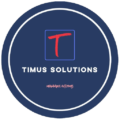Revolutionizing OPDs: How IoMT is Transforming Doctor-Patient Care, Empowering Nurses, and Streamlining Front Office Operations
By Sumit Singh, Founder & CEO, Timus Solutions, Mar. 5, 2024
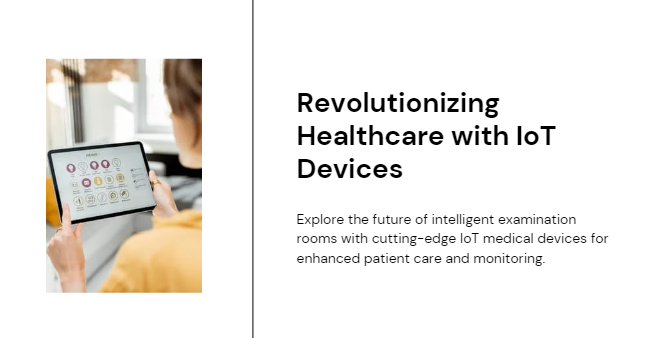
Introduction:
Imagine an OPD where patients experience minimal wait times, care coordinators effortlessly manage appointments and paperwork, and nurses and doctors have real-time access to crucial health data. This vision is becoming reality thanks to the Internet of Medical Things (IoMT). IoMT integrates medical devices and sensors with data networks, creating a connected ecosystem that streamlines healthcare delivery, empowers all staff members, and ultimately improves patient satisfaction.
Benefits for Patients:
IoMT empowers patients by putting patients at the centre of their care journey, providing them with greater control and visibility into their health. Here are some key benefits patients experience:
Empowered Health Management:
- Real-time health data: Access real-time data from IoMT devices like wearables and smart glucometers, allowing them to monitor vital signs, track trends, and gain a deeper understanding of their health status.
- Improved self-care: Utilize IoMT devices to set personalized goals, track progress, and receive feedback, fostering proactive self-care practices and promoting healthy behaviours.
- Enhanced communication: IoMT platforms facilitate secure communication with doctors and nurses through messaging features, allowing patients to ask questions, clarify concerns, and receive timely feedback without needing an in-person visit.
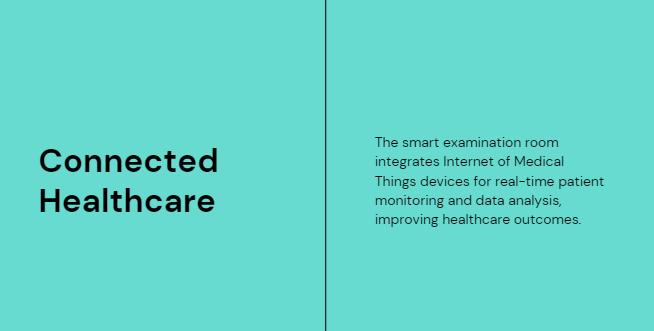
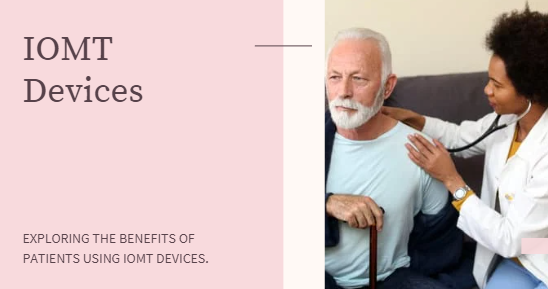
Increased Convenience and Reduced Costs:
- Remote monitoring and consultations: Eliminate unnecessary trips to the clinic for routine check-ups or medication refills through IoMT-enabled remote monitoring and consultations. This reduces travel time and associated costs, particularly beneficial for patients in remote areas or with mobility limitations.
- Improved medication adherence: Receive medication reminders and educational resources directly on IoMT devices, promoting better adherence to treatment plans and potentially improving health outcomes and reducing medication-related complications.
- Streamlined appointment scheduling: IoMT data can be used to schedule appointments automatically, reducing wait times and ensuring a smoother patient experience.
Personalized Care and Improved Outcomes:
- Early detection and intervention: IoMT allows for continuous monitoring and identification of potential health concerns early on, enabling timely intervention and preventing complications.
- Data-driven personalized care: Physicians can leverage IoMT data to create personalized treatment plans tailored to a patient’s specific needs and health status, leading to improved outcomes.
- Enhanced patient engagement: By actively participating in their care through data collection and communication, patients become more invested in their health journey, leading to better adherence to treatment plans and improved overall well-being.
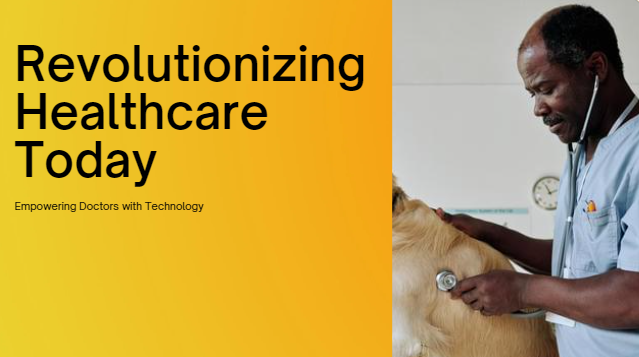
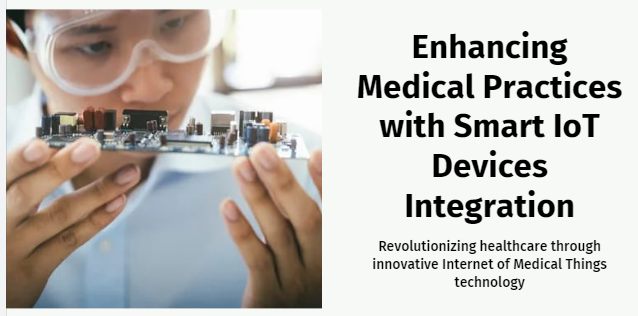
Examples and Use Cases:
- Diabetic patients: Utilize continuous glucose monitoring (CGM) systems to track blood sugar levels in real-time, allowing them to adjust insulin doses and dietary choices effectively, improving glycemic control and reducing the risk of complications.
- Cardiac patients: Participate in cardiac rehabilitation programs that utilize wearable technology to track exercise progress and receive remote coaching, fostering self-management of their condition and improving overall health.
- Mental health patients: Utilize sleep trackers and mood monitoring apps to monitor sleep patterns and emotional well-being, allowing them to identify potential triggers and proactively manage their mental health with the support of healthcare professionals.
By incorporating IoMT into OPD settings, healthcare providers can empower patients to take an active role in their health journey, leading to improved self-management, better treatment adherence, and ultimately, enhanced patient outcomes and satisfaction.
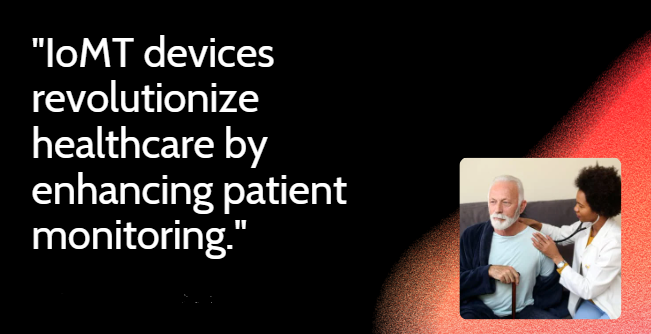
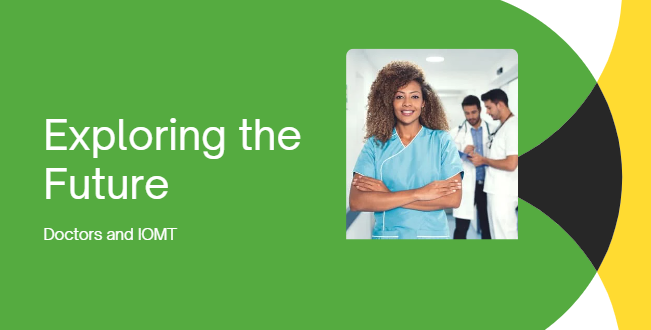
Benefits for Doctors:
IoMT empowers doctors by unlocking a new era of data-driven medicine. From smart stethoscopes to continuous glucose monitoring, these technologies enrich diagnoses, personalize treatment plans, and ultimately, improve patient outcomes. Here are some to start with:
- Enhanced Patient Monitoring: Continuously monitor vitals like blood pressure, blood sugar, and heart rate remotely using IoMT-enabled devices. This empowers proactive intervention and prevention of complications, freeing up doctors’ time for more complex cases.
- Improved Diagnostics: Leverage data from wearables and smart glucometers to gain deeper insights into patients’ conditions, leading to more accurate diagnoses and personalized treatment plans. IoMT platforms can analyse vast amounts of data from multiple sources, providing a holistic view of the patient’s health.
- Streamlined Workflow: Automate administrative tasks like appointment scheduling and data entry through IoMT platforms. Imagine appointments scheduled automatically based on patients’ vital signs or medication refills triggered remotely. This frees up doctors’ time for patient interaction and reduces paperwork burdens.
- Remote Consultations: Conduct virtual consultations through video conferencing platforms integrated with IoMT systems. IoMT data can be shared seamlessly during consultations, allowing doctors to make informed decisions remotely, particularly beneficial for patients in remote areas or with mobility limitations.
Examples and Use Cases:
Enhanced Diagnostics and Treatment Planning:
- Smart stethoscopes: Amplify heart sounds and analyse murmurs, providing doctors with clearer and more objective data for diagnosing heart conditions like arrhythmias or valvular heart disease.
- Non-invasive blood glucose monitors: Measure blood sugar levels through interstitial fluid without the need for finger pricks, offering a more comfortable and convenient way for doctors to monitor diabetic patients during consultations.
- Dermatoscopes with image analysis: Capture high-resolution images of skin lesions, allowing for AI-powered analysis and identification of potential skin cancers, improving early detection and treatment planning.
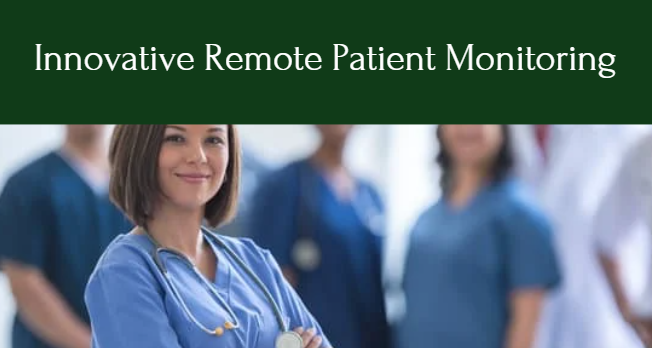
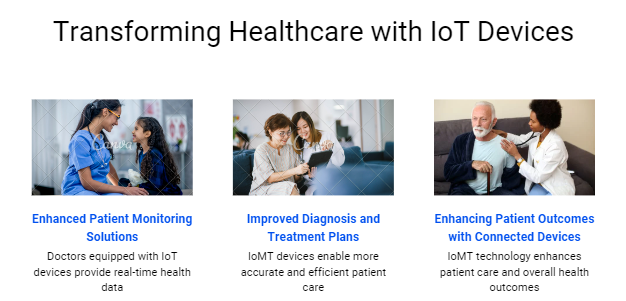

Streamlined Workflow and Improved Efficiency:
- Voice-activated medical records: Dictate notes and clinical findings directly into electronic health records (EHRs) through IoMT devices, reducing transcription time and improving documentation accuracy.
- Automated medication dispensing systems: Integrate with IoMT platforms to automatically dispense pre-programmed medication doses, reducing medication errors and freeing up doctor time for patient interaction.
- Remote patient monitoring dashboards: Provide a centralized platform to view and analyse real-time data from various IoMT devices worn by patients, allowing doctors to monitor multiple patients remotely and identify potential issues early on.
- Pregnant women: Utilize remote fetal heart rate monitoring devices to track fetal well-being and identify potential complications, potentially reducing the need for unnecessary hospital visits.
- Post-surgical patients: Employ remote wound care monitoring systems to track healing progress and identify potential infections early, enabling timely intervention and preventing complications.
- Patients with chronic respiratory conditions: Utilize portable spirometry devices to measure lung function remotely, allowing doctors to monitor disease progression and adjust treatment plans as needed.
By leveraging IoMT in these ways, doctors can gain valuable insights into patient health, improve diagnostic accuracy, streamline workflows, and ultimately provide more efficient and effective care.
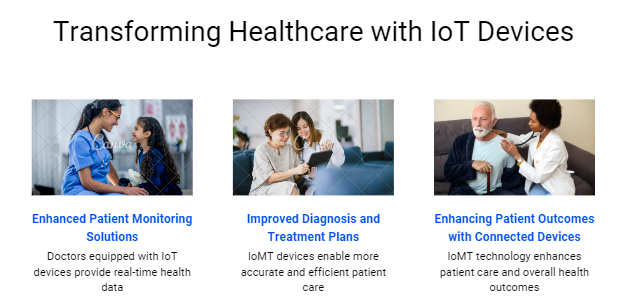
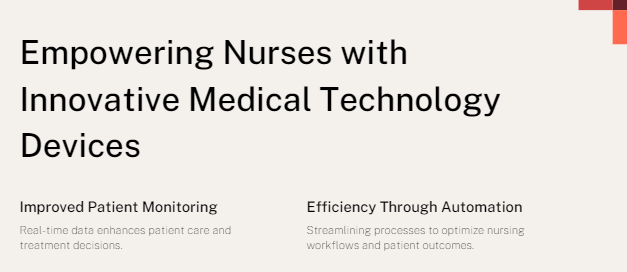
Benefits for Nurses:
IoMT is transforming healthcare delivery by empowering the frontline staff such as the nurses who are at the forefront of this revolution. There are now tools available beyond the traditional set starting with IoMT equipped advanced tools with real-time monitoring for remote triage, transforming their approach to patient care. Let’s explore how IoMT empowers nurses to deliver exceptional care.
- Real-time Patient Monitoring: Gain instant access to patients’ vital signs, medication adherence, and even exercise progress through IoMT devices. This allows nurses to identify potential issues early and intervene promptly, improving patient safety and outcomes.
- Remote Triage and Assessment: Utilize IoMT data for remote triage, prioritizing patients based on their health status and streamlining the assessment process before the doctor’s consultation. This reduces wait times and optimizes resource allocation.
- Automated Documentation: Eliminate manual data entry by integrating IoMT data with electronic health records (EHRs). This frees up nurses’ time for direct patient care and ensures accurate, real-time documentation.
- Enhanced Patient Education: Utilize IoMT devices to deliver personalized educational resources and medication reminders directly to patients. This empowers patients to actively participate in their health management and improve treatment adherence.
Empowering Nurses in the Assessment Process:
- Providing Early Warning Signs: IoMT devices can continuously monitor patients for subtle changes in vital signs or other health indicators that might not be readily apparent during a traditional assessment. This allows nurses to identify potential complications early and escalate concerns to doctors promptly, potentially preventing adverse events.
- Standardizing Assessments: IoMT-enabled tools can guide nurses through standardized assessment protocols, ensuring consistency and completeness in data collection. This leads to more accurate diagnoses and reduces the risk of overlooking crucial information.
- Facilitating Remote Monitoring: In situations where continuous in-person monitoring isn’t feasible, IoMT devices allow nurses to remotely track patients’ health status. This is particularly beneficial for patients with chronic conditions or recovering from surgery, enabling timely interventions even outside the clinical setting.
- Enhancing Patient Engagement: IoMT devices can empower patients to actively participate in their assessments by collecting and sharing their own health data. This two-way communication fosters trust and collaboration between nurses and patients, leading to better health outcomes.
Examples and Use Cases:
Enhanced Patient Education and Support:
- Interactive patient education tools: Utilize IoMT devices to deliver educational content and resources directly to patients, personalized based on their individual needs and conditions. This fosters patient engagement and empowers them to manage their health more effectively.
- Medication administration support: Integrate IoMT devices with medication dispensing systems, providing nurses with visual and audible reminders for medication administration, reducing errors and ensuring patient safety.
- Remote pain management: Utilize wearable devices that track pain levels and physiological responses, allowing nurses to remotely monitor pain and adjust pain management strategies accordingly, improving patient comfort and satisfaction.
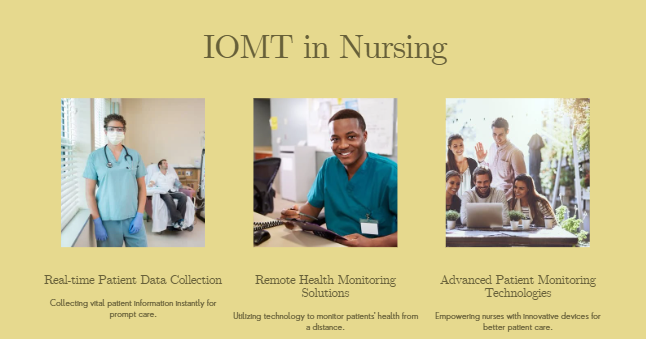
Streamlined Workflows and Improved Efficiency:
- Automated vital sign capture: Utilize IoMT devices like smartwatches or blood pressure cuffs that transmit vital signs automatically to EHRs, eliminating manual data entry and reducing documentation errors.
- Patient call management systems: Integrate with IoMT platforms to prioritize patient calls based on their health status and real-time data, allowing nurses to respond promptly to critical needs and optimize resource allocation.
- Inventory management of medical supplies: Utilize IoMT sensors to track inventory levels of critical medical supplies, ensuring timely re-stocking and preventing stock outs that could disrupt patient care.
- Postnatal care: Utilize smart breast pumps that track milk volume and feeding patterns, allowing nurses to provide personalized guidance and support to new mothers experiencing breastfeeding challenges.
- Burn care: Employ smart wound dressings that monitor wound temperature, moisture levels, and infection markers, enabling nurses to remotely monitor healing progress and identify potential complications early.
- Mental health care: Utilize mood-tracking apps to monitor patients’ emotional well-being and identify potential triggers for depression or anxiety, allowing nurses to intervene proactively and connect patients with appropriate resources.
By leveraging IoMT in these ways, nurses can improve patient education, enhance care delivery efficiency, and provide more personalized and effective support to patients across diverse care settings.
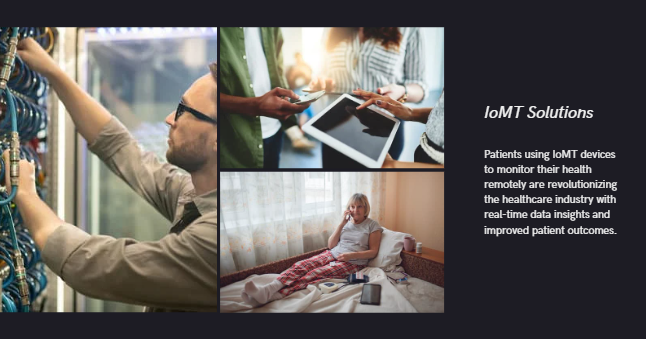
Benefits for Care Coordinators:
Beyond greetings and appointments, IoMT empowers care coordinators to become true orchestrators of patient flow, communication, and resource management. Imagine a front office transformed by IoMT, where efficiency meets personalized care. Here’s how IoMT empowers staff to create a seamless patient experience:
Patient Flow and Improved Scheduling:
- Streamlined Appointment Scheduling: IoMT platforms can automatically schedule appointments based on patients’ IoMT data, such as upcoming medication refills or changes in vital signs. This reduces manual tasks for front office staff and ensures timely appointments for patients who need them most.
- Efficient Check-in and Registration: Utilize IoMT devices for self-check-in kiosks, reducing wait times and streamlining the registration process. Patients can update their information, schedule appointments, and even make payments through these kiosks, freeing up front office staff to assist those who need more personalized attention.
- Improved Patient Flow Management: IoMT data can be used to track patient flow in real-time, allowing staff to anticipate bottlenecks and adjust resources accordingly. This minimizes wait times and ensures a smooth patient experience.
- Enhanced Communication with Patients: IoMT platforms can facilitate secure communication between patients and front office staff through messaging features. This allows patients to ask questions, request appointment changes, or clarify instructions without needing to visit the clinic in person.
- Real-time location tracking: Utilize IoMT-enabled tags or badges to track patient and staff location within the OPD, allowing front office staff to optimize patient flow, anticipate bottlenecks, and allocate resources efficiently.
- Automated appointment reminders: Utilize IoMT platforms to send automated appointment reminders via SMS or email to patients, reducing no-shows and optimizing clinic scheduling.
- Dynamic wait time displays: Integrate IoMT data with digital signage to display real-time wait times in various OPD departments, improving patient experience and managing expectations.
Enhanced Communication and Patient Interaction:
- Telehealth check-in: Utilize IoMT devices like tablets for remote check-in, reducing congestion at the reception area and allowing patients to wait comfortably in designated waiting spaces.
- Interactive kiosks: Implement self-service kiosks powered by IoMT, allowing patients to update information, schedule appointments, make payments, and access educational resources independently, freeing up front office staff for more complex tasks.
- Video conferencing for consultations: Integrate IoMT platforms with video conferencing tools, allowing front office staff to facilitate remote consultations with healthcare providers for specific cases, reducing wait times for urgent care situations.
Other Use Cases:
- Inventory management of patient-controlled analgesia (PCA) pumps: Utilize IoMT sensors to track PCA pump usage and refill needs, ensuring timely medication availability and preventing delays in pain management for patients.
- Equipment management and tracking: Implement IoMT tags to track medical equipment like wheelchairs or blood pressure monitors, streamlining location tracking, reducing loss, and facilitating efficient maintenance schedules.
- Environmental monitoring: Utilize IoMT sensors to monitor temperature, humidity, and air quality within the OPD, ensuring a comfortable and safe environment for patients and staff, potentially reducing the risk of infections and creating a more positive patient experience.

By leveraging IoMT in these ways, front office staff can streamline patient flow, enhance communication, and optimize resource utilization, contributing to a more efficient and patient-centred OPD experience.
Conclusion:
IoMT holds immense potential to transform OPDs into patient-centric, data-driven care centres. By addressing challenges and harnessing its potential, IoMT can revolutionize healthcare delivery, making it more efficient, personalized, and accessible for all.
Do drop in a line with your thoughts or comments at sumit.singh@timussolutions.com.
Timus Solutions will be happy to collaborate and work with you on your business challenges.
